Ho Chi Minh City History Facts and Timeline
(Ho Chi Minh City / Saigon, Vietnam, VN))
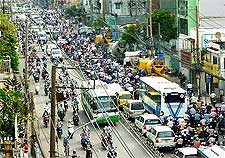
Formerly known as Saigon, Ho Chi Minh City is Vietnam's biggest city and home to more than seven million people. While Ho Chi Minh City is its official name, many locals and visitors alike continue to use the name Saigon informally.
The city is best-known in world history for the Fall of Saigon, an event which brought an end to the Vietnam War. However, the history of Ho Chi Minh City is long and colourful, dating back many centuries before the Vietnamese displaced the Khmers in the 17th century. Saigon during this time was no more than a tiny fishing village, which was known locally as Prey Nokor.
Vietnamese Arrival
The Mekong Delta area where Ho Chi Minh City history established itself was settled by the Khmer Krom people from the powerful 11th-century Angkor state, long before the arrival of the Viets. The first Vietnamese to arrive in the area were refugees from the Trinh-Nguyen Civil War (1627 to 1673). The King of Cambodia, Chey Chettha II, was sympathetic to their plight and allowed the Vietnamese to settle.
The Khmer soon became a minority and military commitments elsewhere meant that Prey Nokor was lost to the Vietnamese and renamed Saigon. In 1698, a member of the Nguyen nobility, Nguyn Huu Canh, arrived in Saigon and established it as a sovereign Vietnamese territory. Much of the early expansion of Saigon is credited to him.
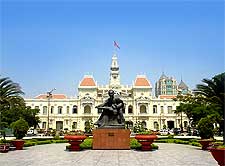
French Rule in Ho Chi Minh City
Saigon was taken by the French in 1859 as part of its expansion of French Indochina. During their colonial rule, the French constructed several classical buildings, many of which remain until this day. The People's Committee Building, originally known as the City Hall (Hotel de Ville), is one of the most imposing examples of French architecture. Many visitors today have their photographs taken with the Ho Chi Minh statue, which stands in front of it. The Notre Dame Cathedral and the Municipal Theatre are other examples of colonial architecture from this era.
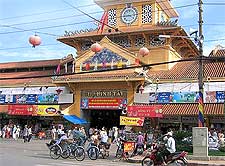
Vietnam War and the Fall of Saigon
The French ruled Indochina for over a century before their defeat to the Viet Minh at Dien Bien Phu made them rethink their colonial interests in South-East Asia. However, with Sino-Communist nationalism on the rise after WWII, the departing French left a dangerous vacuum and the United States stepped in.
By 1955, Emperor Bao Dai had been deposed by strongman Ngo Dinh Dim and a planned national election never occurred, as the Communist Viet Minh led by Ho Chi Minh declared independence for North Vietnam. It wasn't long before the two were at war and America was dragged into one of its most disastrous military adventures.
The Vietnam War officially ended on 30th April 1975, when North Vietnamese forces stormed the gates of the then Independence Palace (Reunification Palace). Hours earlier, the world watched on as the last US personnel remaining in Saigon left by helicopter from the roof of the US Embassy. North and South Vietnam were formally reunified in the months following this traumatic day, and the city was renamed Ho Chi Minh City after the national hero of the same name.
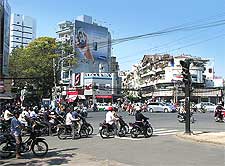
The Reunification Palace
A palace had stood on this site since the French built a wooden structure here. A replacement was completed in 1873 and named after King Norodom of Cambodia. In its early days, the palace housed the French governor, while the Japanese used it as their headquarters during WWII.
During the Vietnam War in 1962, two rogue members of the South Vietnam Air Force flew a plane into the palace, destroying much of the west wing in an attempt to assassinate the then President of the Republic of Vietnam, Ngo Dinh Dim. The palace was rebuilt by 1966 and still stands to this day.
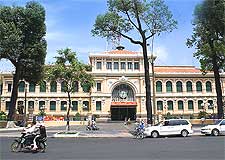
The Reunification Palace is a popular destination for visitors to the city, with guided tours giving an insight into the modern history of Ho Chi Minh City. A tank is parked outside the building as a reminder of the events that took place in 1975. Nearby, visitors can learn more about Ho Chi Minh City war history by visiting the War Remnants Museum.
In the years after the war, Ho Chi Minh City suffered terribly as the victorious North Vietnamese Army and unified government exacted cruel retribution on those associated with the South Vietnamese army and their collaborators. For this free-wheeling city, a strict Communist doctrine proved disastrous and the south suffered even more poverty and trauma than during the war.
Its mercantile spirit was never broken and it began to re-emerge in the nineties, as the collapse of European Communism forced Vietnam to stand on its own feet and introduce economic reforms known as 'Doi Moi'. Since then, Ho Chi Minh city has thrived and is now a major commercial hub in the region.
 Formerly known as Saigon, Ho Chi Minh City is Vietnam's biggest city and home to more than seven million people. While Ho Chi Minh City is its official name, many locals and visitors alike continue to use the name Saigon informally.
Formerly known as Saigon, Ho Chi Minh City is Vietnam's biggest city and home to more than seven million people. While Ho Chi Minh City is its official name, many locals and visitors alike continue to use the name Saigon informally.


 The Reunification Palace is a popular destination for visitors to the city, with guided tours giving an insight into the modern history of Ho Chi Minh City. A tank is parked outside the building as a reminder of the events that took place in 1975. Nearby, visitors can learn more about Ho Chi Minh City war history by visiting the War Remnants Museum.
The Reunification Palace is a popular destination for visitors to the city, with guided tours giving an insight into the modern history of Ho Chi Minh City. A tank is parked outside the building as a reminder of the events that took place in 1975. Nearby, visitors can learn more about Ho Chi Minh City war history by visiting the War Remnants Museum.